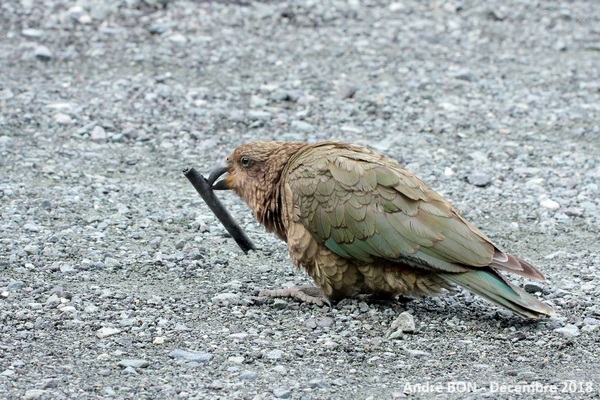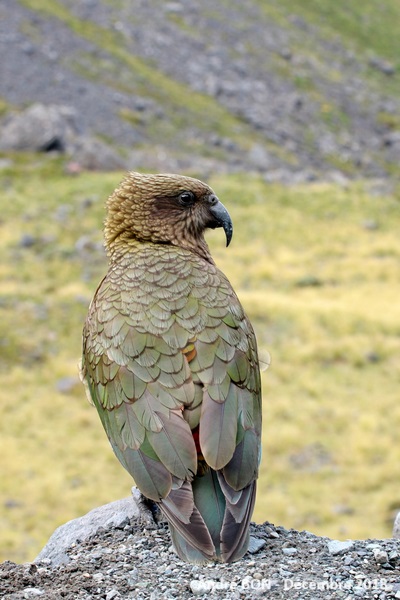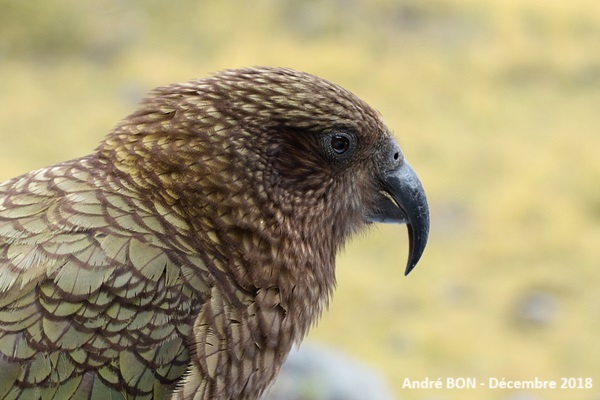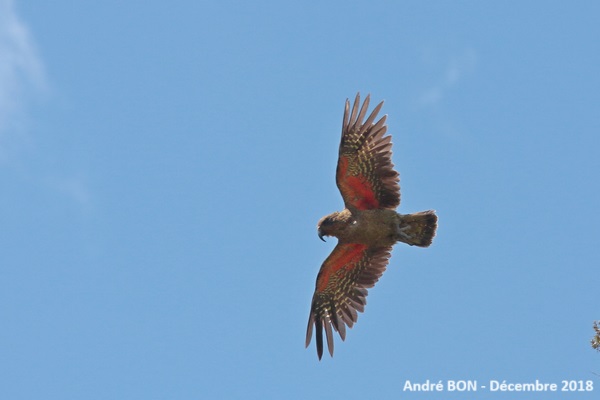





| Kea (Nestor notabilis (Gould, 1856)) |






|
|
Scientific name: Nestor notabilis (Gould, 1856) Common name: Kea French name: Nestor kéa Order: Psittaciformes Family: Strigopidae Size: Body size: 46 to 50 cm; Weight: 800 to 1000 g; Wingspan: about 90 cm. Habitat: Altitude forests up to 2200 meters with a preference for narrow valleys populated by Beeches (nothofagus cliffortioides) and high altitude scrub areas. The Kea is also found in coastal forests. It does not hesitate to approach houses and parking lots. It is the only species of mountain parrot in the world. Food: Mainly vegetarian, Keas feed on leaves, buds, berries, seeds, roots and nectar. They also consume some insects and can be scavengers. They can be seen heading to ski resorts, campsites, parking lots and garbage dumps in search of food. Nesting: Kea nest in cavities, under roots, under stumps, under rocks or under pebbles. The nests are lined with twigs, dry grass, moss and lichens. There are two to four eggs per clutch. Migration: Sedentary with moves in altitude following the seasons and during the dispersal of the young. Geographic area: Endemic to the mountains of the South Island of New Zealand. |
The Kea has bronze green upper parts with black-edged feathers and olive green lower parts. The lower back is dull red. The underside of the wings is orange-red then barred with yellow and black. The legs are bluish grey. The bill is blackish with a very long hooked upper mandible. Females are slightly smaller than males and the upper mandible is a little shorter. Juveniles have a yellowish base of the bill. Keas live in family groups and can gather in groups of 30 to 40 birds. |
| [To know more about the Kea] [Next picture] [Top] |

|
The Homer Tunnel sees all the visitors who want to see the magnificent Milford Sound and the parking lot at the entrance to the tunnel attracts Keas. Be careful not to leave your vehicle unattended as your windshield wipers, rubber seals and other accessories can quickly turn into toys. |
| [To know more about the Kea] [Next picture] [Previous picture] [Top] |

|
It is recommended not to feed Keas because this distracts them from their natural feeding habits and is harmful to them, particularly through the ingestion of toxic products. |
| [To know more about the Kea] [Next picture] [Previous picture] [Top] |

|
Photos near Homer tunnel are very easy to take but we would prefer to meet the Keas in isolated places in the mountains. |
| [To know more about the Kea] [Next picture] [Previous picture] [Top] |

|
This Kea was kind enough to show me the dull red feathers at the base of its back. |
| [To know more about the Kea] [Next picture] [Previous picture] [Top] |

|
The upper mandible of the bill is really impressive. |
| [To know more about the Kea] [Previous picture] [Top] |

|
I have been happy to observe a Kea in the middle of the mountains during a beautiful hike to Mueller Hut. |